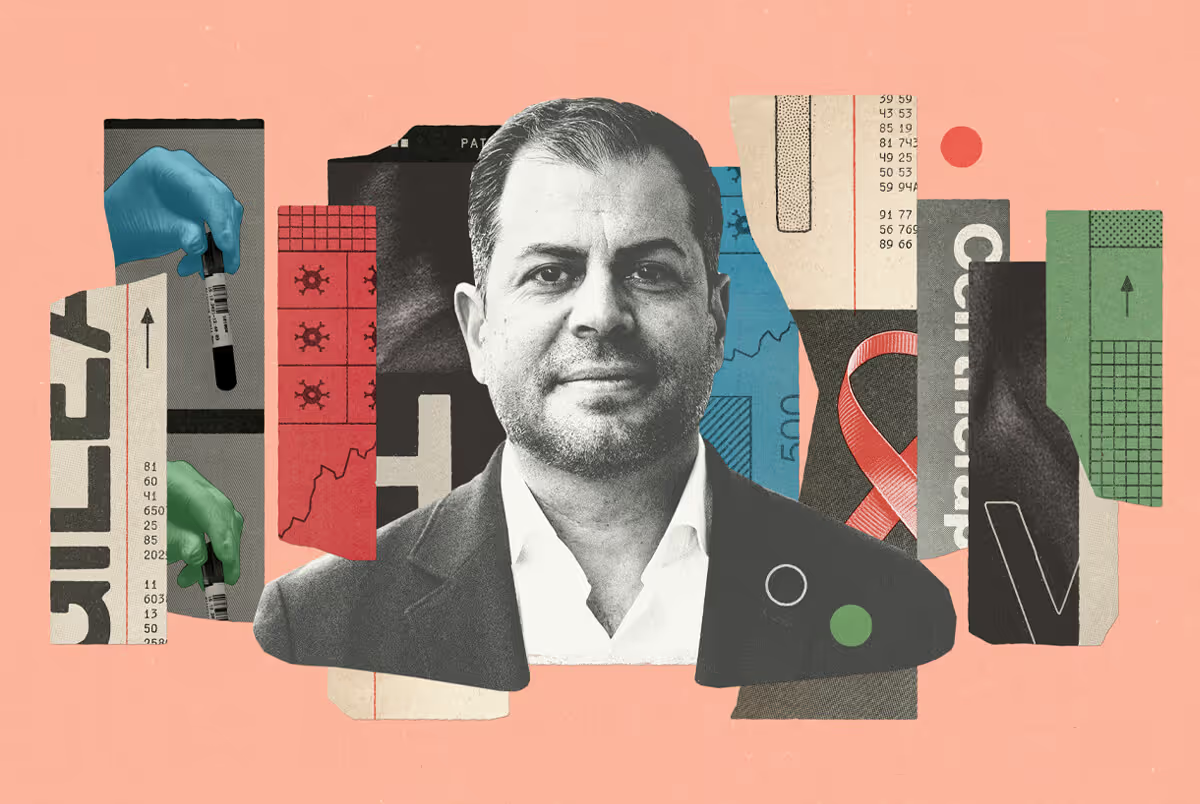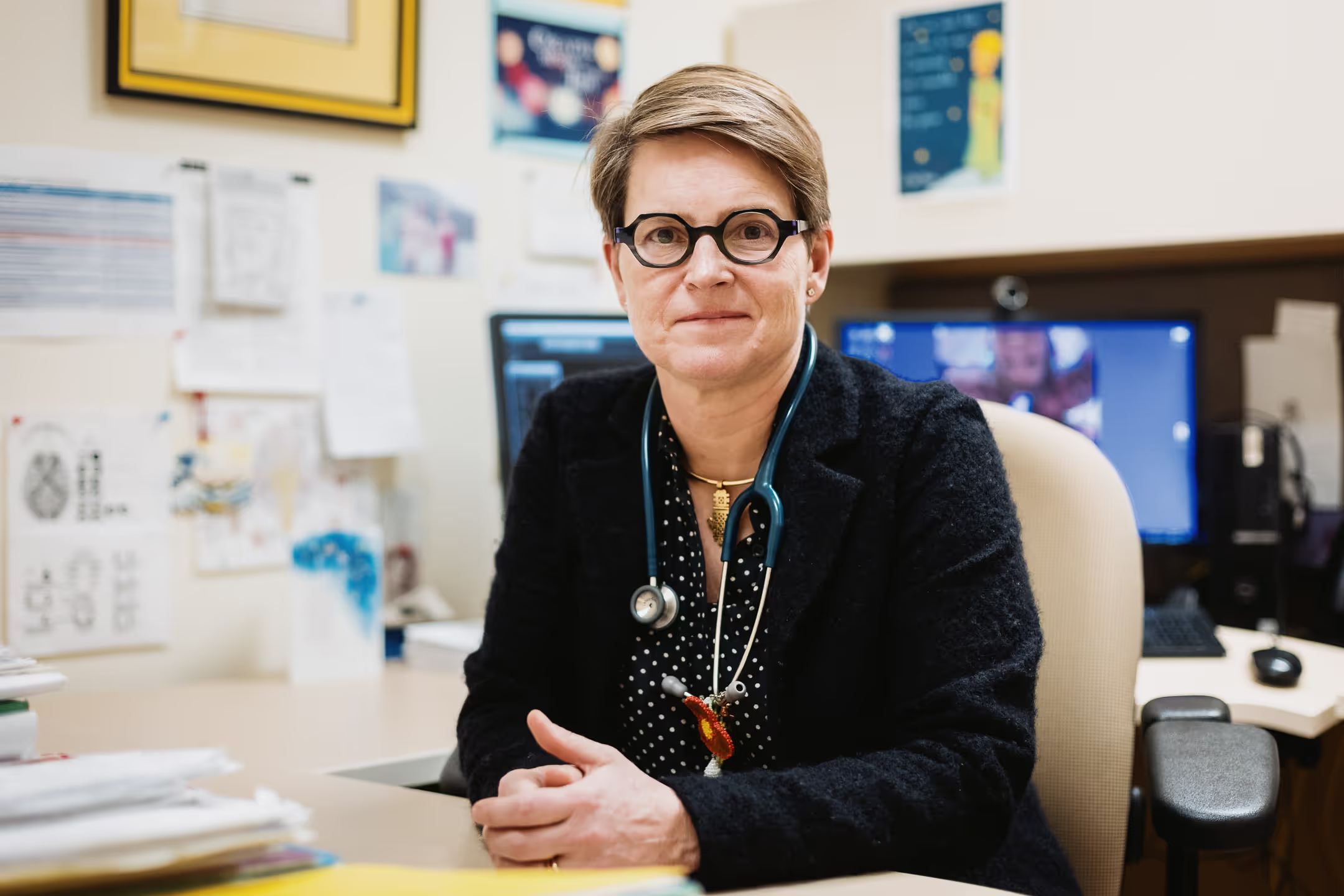
Dr. Jewett is a Neuromuscular Clinical and Research Fellow at the University of Calgary.
1. What is ALS? Who does it affect?
Amyotrophic lateral sclerosis (ALS) is a neurological disease that causes degeneration of motor neurons, which are the cells that carry signals of movement from our brain to our muscles. As motor neurons die, people with ALS become weak. In most people with ALS, weakness begins in the arms or legs, but it can also cause weakness in the face, swallowing, and breathing muscles. This can cause difficulties with eating and swallowing, speaking, and breathing. Progressive weakness is eventually fatal.
ALS can affect anyone but is slightly more common in males than in females. Although ALS is rare, among rare diseases it’s fairly common — approximately one in 350 people will be affected by ALS in their lifetime.
One of the big challenges in ALS is that, in most cases, we don’t completely understand the cause. There are several theories with good scientific evidence and this is an area of very active research. Understanding the cause is the key to developing treatments.
About one in 10 people with ALS have a family member with ALS, in which case we suspect and can often identify a genetic cause. The remainder of ALS is what we call sporadic disease, which means there's no family history. Even in people who do not have a family history, we can sometimes identify a genetic cause. People with certain kinds of genetic ALS may be able to access new treatments that have the potential to slow disease.
2. Is ALS a challenging condition to diagnose? If so, why?
ALS can be very challenging to diagnose, particularly early on. There's no single test for ALS, so diagnosis depends on a careful history and examination. People can initially have only one of many mild symptoms — weakness in one hand or leg, slurring of speech, increased drooling, difficulty swallowing, or shortness of breath. Because ALS is relatively rare, an average primary care doctor may only see the earliest forms of ALS one or two times in their career, if at all.
Even for neurologists who have seen ALS many times, the diagnosis can be difficult in early stages. One of our priorities in the ALS community is to ensure people with possible symptoms of ALS are referred early to see a neurologist so they can be diagnosed more quickly. Delays can happen because people don’t seek medical attention, because the first doctors who see them don’t recognize symptoms of early ALS, or because there are delays to see a specialist, who may then also fail to recognize the disease. This is particularly an issue for people in rural areas who may have less access to medical care.
As ALS progresses, the symptoms and signs of disease are much more easily identified, and the diagnosis becomes easier. However, we don’t want to wait for people to progress before we make a diagnosis.
“One of our priorities in the ALS community is to ensure people with possible symptoms of ALS are referred early to see a neurologist so they can be diagnosed more quickly.”
3. Why is this problematic? How does it impact patients?
Making an early diagnosis of ALS is important because it allows us to care for patients and families in specialized ALS clinics and to offer treatments that slow the progression of disease. We know that access to a variety of specialized care providers in a multi-disciplinary clinic is one of the most important ways we can prolong survival and optimize quality of life.
We are fortunately seeing an increasing number of ALS treatment options; there are now three Health Canada-approved medications that slow ALS progression. Unfortunately, delayed diagnosis is a barrier to accessing medications. Some of these treatments are only covered by insurance if they're started early after symptoms begin, and the price of most of these medications makes it impossible for the vast majority of people to pay for them. A recent study that we conducted showed that less than 10 percent of patients would qualify for insurance coverage for some of these treatments, and in many this was because we were too slow in diagnosing their disease. As a clinician, it's frustrating to have treatments available that cannot be accessed in part due to cost. It's even more frustrating for patients and their families, who may have to live with the knowledge that there are possible treatments not available to them.
The Canadian ALS community has been very effective in advocating for early access to new treatments with optimized drug approval processes, so we're making progress. However, the issue of high-cost medications, not only in ALS but in all rare diseases, is an economic challenge that we will need to address.

4. What kinds of challenges are associated with developing therapies for ALS?
The first big challenge is that we don’t yet have a clear understanding of the cause of most cases of ALS, which means that it's challenging to know where to target new therapies. There's exciting research ongoing to solve this problem and the new treatments we have are a result of this work. In one form of genetic ALS caused by mutations in the SOD1 gene, we're now treating a small number of people with an exciting new medication as part of an early access program.
The second big challenge is determining if new therapies are effective. ALS can present and progress very differently from patient to patient, so when we perform clinical trials to test new medications we require long studies and a large number of participants. This is a very expensive process and is part of the reason that new therapies are so costly. There has been progress in the design of these research studies to recruit people who are more likely to have similar disease progression. However, we've seen a pattern where insurance coverage is limited to only people who would have met strict inclusion criteria for the clinical trials, which is limiting access to treatments. As a research community, we're still struggling to find the right balance.

5. Why is it a hopeful time for Canada’s ALS community?
There are many reasons for our community to be hopeful. The first is that we’ve seen an increase in the pace of therapeutic development in ALS. The first therapy for ALS was approved in the mid-‘90s, and it wasn’t until 2017 that there was a second. Now, within the last year, we have another approved therapy. There are many clinical trials testing new therapies that are ongoing.
The second reason to be optimistic is that the Canadian ALS community has been very effective in advocating for streamlined access to treatments. There are often significant delays from therapeutic development to having therapies approved and made available to patients. For those living with ALS, where average survival is three to five years if untreated, the often decade-long process of developing new therapies is disheartening. Through tireless advocacy, the Canadian ALS community has helped develop more efficient pathways for drugs to be evaluated and approved.
We still have a long way to go. The treatments we’re talking about may slow progression and/or prolong survival, but they're not cures. The next step is treatments that slow disease more significantly, or even provide a cure.
ALS Action Canada (ALSAC) is Canada’s first and only ALS patient-led non-profit organization. ALSAC is dedicated to building a movement to ensure urgent, equitable access to promising drug therapies, more and better clinical trials in Canada, and increased federal and provincial investment in ALS research. Visit alsactioncanada.org to learn more.
This content was supported by Amylyx Pharmaceuticals, Inc. This page was developed by Patient Voice, and the supporter did not influence the final article or editorial themes of this content.
%20(1).jpg)






